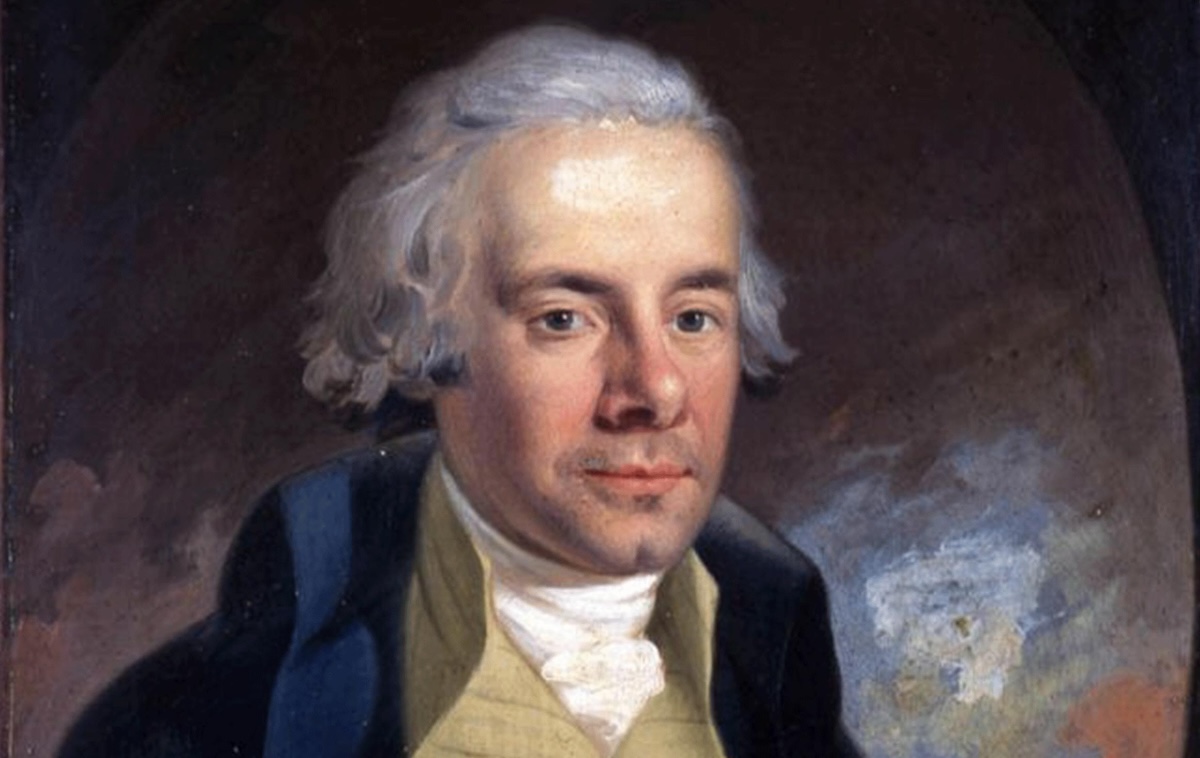On February 24, 1807, the House of Commons voted by 283 votes to 16 to end the trade in human slaves in all British territories. The outcome was testimony to the tenacity, zeal, and commitment of the most prominent evangelical Member of Parliament at the end of the 18th century, William Wilberforce (1759–1833). It had been a long journey.
Wilberforce represents the more mature phase of the evangelical revival. His conversion, in 1785, led him to campaign not only against slavery but also for wider moral reforms in society. His involvement in key evangelical organizations led to, among other things, a battle against social and personal vice; the establishment of an evangelical newspaper, the Christian Observer; and the publication of a widely popular theological tract, A Practical View.
William was born in 1759 into a prosperous merchant and trading family in Hull, a port on the east coast of England. His early years were dominated by the family’s business life. At the age of seven, William entered Hull Grammar School. Within a few months, a new head teacher arrived on the scene, Joseph Milner, whose family became an important part of evangelical life in Hull and exercised great influence on William.
William’s father, Robert, died in 1768 at the age of 39. His mother, Elizabeth, unable to cope, sent him to an uncle, also William, in London, where he attended school. Uncle William and his wife, Hannah, were committed evangelicals and even took their charge in early summer 1771 to meet John Newton in his rectory in Olney, which, as we will see, was a relationship that would come full circle in adult life in an unexpected turn of providence. This early exposure to the faith was not appreciated by his mother and wider family, however, and Elizabeth removed William from his uncle’s care.
Back in Hull, young William was drawn into the attractions of the theater, balls, cards, gaming, concerts, and plays as the influence of religion gradually wore thin. In 1776, Wilberforce entered Cambridge. Here, still surrounded by vice and drunkenness and with no attachment to piety, he met and formed a friendship with William Pitt, the future prime minister. This friendship was important and long lasting, but not without its tensions. It was at this time that Wilberforce resolved to become a Member of Parliament, and in 1780, at the extraordinarily young age of 21, he was elected to Parliament for Hull as an independent.
In 1784 Wilberforce set off on a tour of Europe in the company of Isaac Milner (1750–1820), the younger brother of Joseph Milner, the head teacher in Hull who now embarking on an illustrious academic career at Cambridge. While away, Milner introduced Wilberforce to Philip Doddridge’s The Rise and Progress of Religion in the Soul. Doddridge was an early proponent of the evangelical revival among independents and nonconformists, a theologian, and a hymn writer. His treatise emphasized self-examination, prayer, devotions, diligence, prudence, divine providence, and, indeed, the certainty of death and judgment. These were the classic themes of the revival. Milner called it one of the best books ever written and challenged Wilberforce to study it. Wilberforce also began to study the Greek New Testament with Milner, and by autumn 1785, after arriving back in London, his conversion was complete. Wilberforce spoke of his “sense of my great sinfulness in having so long neglected the unspeakable mercies of my God and Saviour.”
Wilberforce immediately commenced a campaign for the reformation of society. He established a voluntary society that eventually became the Society for the Suppression of Vice and campaigned against gambling, prostitution, indecency, and drunkenness. Yet he wobbled. What was God’s call upon his life? Should he remain in Parliament? Wilberforce found himself a member of the congregation of St Mary, Woolnoth, in the shadow of the Bank of England in the heart of the city of London. The rector was John Newton, who had moved from his post in Olney. Wilberforce sought Newton’s counsel, yet there is the story of his being so nervous and overly concerned for his public reputation that he walked around the square where Newton lived several times before knocking at the door. Their acquaintance finally reestablished, Newton urged Wilberforce to remain in public life. By 1788 they were campaigning together against the slave trade.
The Quakers had originally formed an anti-slavery committee in 1783, but there was much overlap and collaboration with the evangelical group emerging around Wilberforce. The Committee for Effecting the Abolition of the Slave Trade was formed in 1787, and Wilberforce agreed to take up the cause in Parliament.
In January 1788, Newton, a former captain of a slave-trading ship, became a public campaigner for the abolitionist movement when he published his sensational and highly influential pamphlet Thoughts Upon the African Slave Trade. There is no question that remorse was one of the motives behind publication, with Newton commenting that “I was once an active instrument in a business at which my heart now shudders.” His testimony was of vital importance in converting public opinion to the abolitionist cause. The Abolition Society purchased some 3,500 copies of the pamphlet, distributing them to the members of both Houses of Parliament.
Wilberforce’s first speech in Parliament against the slave trade, on May 12, 1789, was a masterpiece of eloquence, clarity, and fluency, despite his being unwell. Poor health, including weak eyesight, plagued him throughout his life, but he was determined to present primary evidence of the depredations of the slave trade before Parliament. He spoke for some three and a half hours. He knew that mere appeals to Christian morality were very unlikely to work. He had to persuade the House that the abolition of the trade was not merely desirable but consistent with the interests of a commercial, trading, seafaring nation and empire. Wilberforce appealed to justice, international leadership, and the idea of free trade upon true commercial principles. Regarding the trade in slaves, he argued, “The nature and all the circumstances of this trade are now laid open to us; we can no longer plead ignorance, we cannot evade it.” The pro-slavery forces moved for delay. In reality, abolition was not going to be quick.
The geographical center of Wilberforce’s campaign against the slave trade and, indeed, of other evangelical campaigns in Parliament was an estate in Clapham, about three miles from Parliament’s location in central London. Here, the wealthy evangelical banker Henry Thornton (1760–1815) purchased a property, Battersea Rise House, in 1792, extended it, and built other properties on the grounds. Several prominent evangelical merchants and politicians, including William Wilberforce, moved onto the estate. While living there, Wilberforce, in 1797, married Barbara Spooner. Over the next 10 years, they had six children. An evangelical rector was secured for the parish church, and the group worshipped together, prayed together, and campaigned together. Henry Thornton described Wilberforce as “a candle that should not be hid under a bushel.” Clapham became an evangelical powerhouse, and the group is known to history as the Clapham Sect, but at the time merely as “the saints.”
Campaigning took place both inside and outside Parliament, with evangelicals at the heart of the action. On April 18, 1791, Wilberforce again moved in the House of Commons a motion for the Abolition of the Slave Trade. This time he spoke for four hours—parliamentary speeches in those days were marathons of both substance and style. As he closed his speech, Wilberforce declared:
Never, never, will we desist till we have wiped away this scandal from the Christian name … and extinguished every trace of this bloody traffic … a disgrace and dishonour to this country.
The vote went against Wilberforce.
The campaigners had to be both patient and tenacious. Wilberforce brought abolition bills to Parliament year after year between 1794 and 1799, only to see them rejected. The Lords remained opposed, and by now Pitt and his administration had become somewhat less sympathetic. Wilberforce did not bring abolition bills between 1800 and 1803, and the Abolition Committee had even ceased to meet. But the saints did not give up. In May 1804, the Abolition Committee convened for the first time since 1797, with Wilberforce and fellow campaigner Granville Sharp meeting with eight other evangelicals and Quakers.
The abolitionists now resurfaced and went for the kill. The tide was turning. Pitt’s hesitant Tory administration had given way to a Whig government under George Grenville. We should note that party affiliation was much looser than it is today. Wilberforce & Co. announced their intention of again moving an abolition bill. Pamphlets flowed again from pens, and evangelical abolitionists now sounded ever more loudly the idea of divine judgement upon the nation. Granville Sharp referred to hurricanes on the Caribbean plantations as judgments from God. Another, James Stephen, referred to the threat from France as a sign of divine anger against the nation for involvement in the slave trade. France’s own punishment had been the revolution.
Prime Minister Grenville himself moved abolition in the Lords. The government was now fully onside. In the Commons, Wilberforce was given a standing ovation. The vote passed on February 23, 1807, though it was a few months more before it was formally implemented.
Wilberforce was a man used by God, even though he had at one point in his life drifted away from “vital religion.” Yet God in his providence brought him into contact with people and families who would exert evangelical influence, including the Thorntons and, of course, John Newton. William Wilberforce came to embrace the central tenets of the faith and poured out those convictions into his best-selling treatise, published in 1797, A Practical View. He campaigned in Parliament for moral reform and, of course, against the evils of the slave trade. With Wilberforce’s theological writing (though he was no trained theologian) and that of others, and the foundation in 1802 of the Christian Observer newspaper, evangelicalism was both maturing and changing society.
We have, over the course of 2023, looked at several of the key personalities of England’s evangelical revival, from such well-known names as John and Charles Wesley and George Whitefield, to pioneers like William Grimshaw and strategists and activists ranging from the Countess of Huntingdon to John Newton and Hannah More. What unites these disparate individuals? Perhaps three things. First, a passion for a true and lively faith that transforms the heart. Secondly, a holistic view of God’s love for the world that saw no contradiction between personal faith and a transformed society. Thirdly, a tenacity that drove these individuals never to give up, never to give up for Christ. We thank God for the great evangelical revival, the awakening, and we pray God may act again.

